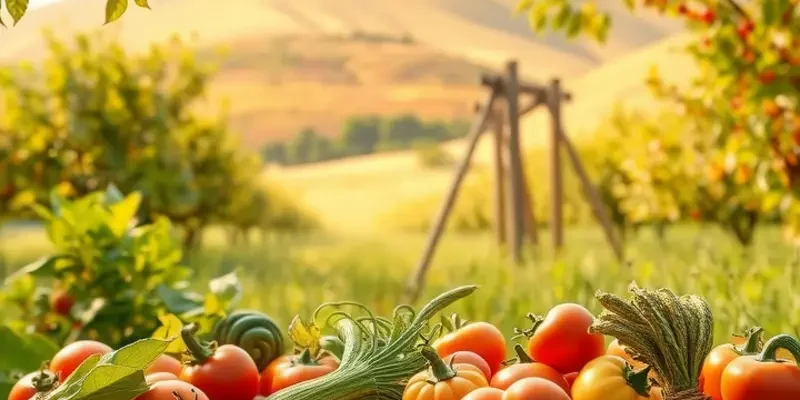Achieving evenly cooked meals sometimes feels elusive, especially when using various types of pans. This guide offers practical tips to help home cooks at all skill levels improve their cooking technique, ensuring you achieve that perfect balance of flavor and texture. Understanding how to use your pans effectively can elevate your culinary skills and result in delicious dishes that are cooked to perfection.
Choosing the Right Pan

Selecting the right pan is crucial for achieving even cooking results. The pan you choose impacts the heat distribution and cooking efficiency of your meals. Let’s explore the factors to consider when choosing a pan, including material, size, and design.
Material Matters
The material of your pan significantly affects how evenly it cooks. Common materials include stainless steel, cast iron, non-stick, and copper. Each has unique properties that make it suitable for different cooking methods.
-
Stainless Steel: Known for its durability and non-reactive surface, stainless steel is an excellent choice for browning and searing. While it doesn’t retain heat as efficiently as cast iron, it distributes heat evenly, offering consistent cooking results.
-
Cast Iron: This material is renowned for its heat retention and even distribution. It is perfect for slow-cooking methods like braising or frying. However, it requires seasoning to maintain its non-stick properties, and its heavy weight can be a challenge for some.
-
Non-Stick: Ideal for cooking delicate foods such as eggs or pancakes, non-stick pans offer the convenience of easy cleanup. However, high heat can damage their coating, so avoid using them for tasks like searing.
-
Copper: This material provides superior heat conductivity, making it excellent for precision cooking tasks that require quick heat adjustments. Copper pans often have a stainless steel or tin lining to prevent reaction with food.
Size and Capacity
The size of your pan also plays a role in achieving evenly cooked dishes. Use a pan that’s too small, and you’ll overcrowd the ingredients, leading to uneven cooking. On the other hand, a pan that’s too large can cause hot spots.
-
Skillet or Fry Pan: An essential kitchen tool, its size can range from small (about 8 inches) to large (12 inches or more). Choose a size that suits the number of portions you usually cook.
-
Sauté Pan: With straighter sides than a skillet, this pan is perfect for dishes that require tossing and stirring. Its larger surface area is ideal for cooking several servings at once.
Design Features
Certain design elements can enhance or hinder the cooking process. A pan with a thick, heavy base will distribute heat more evenly, reducing the risk of hot spots. Look for pans with riveted handles for durability, especially if you frequently move them from stovetop to oven.
A quality pan should have a well-fitted lid to trap heat and moisture, useful for braising and simmering. When choosing a lid, consider glass if you like to monitor your cooking without lifting it and releasing heat.
Choosing the right pan is a balancing act of materials, size, and design tailored to your cooking needs. By investing in the appropriate cookware, you’ll enhance your cooking efficiency and results.
If you’re interested in learning more about optimizing your kitchen practices, consider exploring options like eco-smart kitchen storage.
Techniques for Even Cooking

Cooking evenly is a skill that requires attention to detail and an understanding of how different elements interact in the kitchen. The foundation of even cooking is heat management. Start by preheating your pan adequately. This ensures a uniform temperature across the surface, allowing ingredients to cook consistently from the start. Use medium heat for most dishes, as it provides a balance between thorough cooking and avoiding burning.
Next, consider ingredient preparation. Uniformity in size is crucial; when pieces are of similar size, they cook at the same rate. This prevents some parts from being undercooked while others are overdone. Cut vegetables and proteins consistently, and remember that thinner slices and smaller pieces will cook faster. If you’re preparing a mixed dish like a stir-fry, keep in mind that harder vegetables, such as carrots or broccoli, might benefit from a brief pre-cooking to ensure tenderness while preventing other ingredients from overcooking.
A key aspect of even cooking is distributing ingredients properly in the pan to allow adequate space for the heat to circulate. Overcrowding leads to steaming rather than searing, especially for proteins, which can result in an uneven cook. When in doubt, cook in batches to maintain optimal pan coverage.
Manipulating cooking times is another effective strategy. Start with ingredients that take the longest to cook. Add faster-cooking components in stages, allowing each layer time to caramelize and develop flavor without rushing the process. For example, if you’re making a stew, begin by browning the meat, then add aromatics like onions and garlic, and let them soften before introducing other vegetables.
When working with delicate foods like seafood, quick, high-temperature cooking is often best. This prevents them from drying out while ensuring they cook through evenly. A brief sear on each side can lock in moisture and enhance flavor, providing that perfect finish without overcooking.
Applying these techniques will elevate your cooking consistency, ensuring each meal meets a high standard of doneness and taste. Implementing thoughtful practices with various dishes can make all the difference in achieving evenly cooked meals. Experiment with these methods to discover what works best for your cooking style and pan choices. For further insights into efficient meal preparation, check out practical ingredient batching techniques which can complement the even cooking process.
Final words
Understanding how to cook evenly in pans not only improves the quality of your meals but also boosts your confidence in the kitchen. Choosing the right pan and mastering cooking techniques can lead to consistently excellent results, whether you’re a novice or a seasoned cook. Embrace the journey of learning and experimenting with your cookware, and remember that every dish is an opportunity to improve your skills. Enjoy the satisfaction of serving perfectly cooked meals that you can be proud of.







